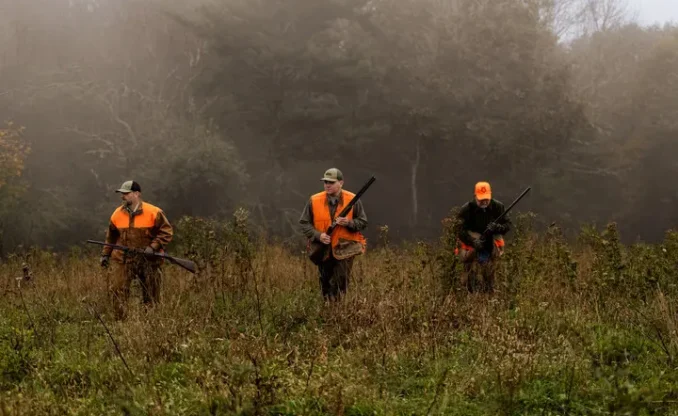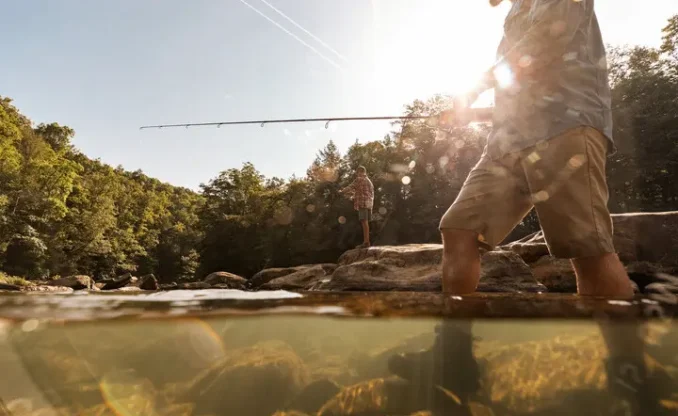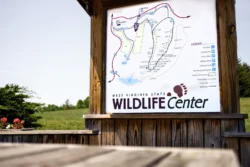Want to be a better angler? Learn how to identify fish.
Chances are you have a favorite fish you like to catch. But did you know that West Virginia’s rivers, streams and lakes are home to 182 different fish species or sport fish hybrids?
West Virginia’s fish diversity is due to the state’s location in the central Appalachian Mountains, where its rivers and streams are part of two drainage basins (Atlantic and Gulf Coast). The introduction of non-native fish also has had a significant impact on the state’s fish fauna. For example, more than half of the fish species in the New and Potomac river drainages are non-native species.
How to Identify Fish
West Virginia’s 182 fish species are grouped within 24 different taxonomic families. Most species are found within the familes Cyprinidae (minnows and carps), Percidae (darters and perches), Catostomidae (suckers), Centrarchidae (basses and sunfish) and Ictaluridae (catfishes). Other fish families may not be as prevalent, but are noteworthy because they are popular with anglers. This includes Salmonidae (trouts and chars), Esocidae (musky and pikes), and Moronidae (white, hybrid and striped bass).
While each fish is unique, being able to distinguish one fish from the other sometimes requires a trained eye. Some fish are unmistakable, such as a paddlefish, lamprey, eel or longnose gar. But no matter what fish you are trying to identify, having a deeper understanding of a fish’s appearance can help you point out differences and similarities with other species.
When identifying a fish, look for the following characteristics:
- Dorsal Fin: Does the fish have one or two, and where are they located? Are the fin rays hard or soft?
- Pelvic Fin: Where are they located? Up front near the throat or farther back?
- Adipose Fin: This functionless, fatty fin is found on trout and catfish? Does this fish have one?
- Scales: Does the fish have scales? If so, how big are they?
- Shape: Is the fish flattened from top to bottom like a sculpin or flattened from side to side like a sunfish?
- Mouth: Where does the mouth point and what do the lips look like? How does the mouth work and how big is the mouth? Does the head or mouth have visible barbels, such as whiskers on a catfish?
- Color: Are the fish’s color patterns splotched, striped, spotted, etc.?
Commonly misidentified fish/how to spot them
Even if you know what you’re looking for, misidentifying a fish can happen to the best of us. The following species are commonly mistaken or of key management interest:
- Channel versus blue catfish
- Largemouth versus spotted bass
- Black versus white crappie
- Darters versus sculpins
- Common carp versus buffalo
- Northern snakehead versus bowfin
Why You Need to Know How to Identify Fish
Knowing characteristics critical to your fish’s identification is important for:
- Complying with fishing regulations and creel and bag limits.
- Identifying invasive species prohibited for bait fishing.
- Determining minimum lengths for trophy citations or state record contenders.
- Researching lures, tactics and habitats for more successful angling.
- Developing a greater understanding of fish communities, relationships among species and their associations with habitats provided by local fisheries.
- Furthermore, familiarity with a multitude of sport and non-sport fishes is a characteristic of a well-rounded angler. The more you learn about any given fish species in West Virginia, the more you realize its role in our state waters and the more demystified and interesting the hidden lives of fish become.
Deep Dive Into Fish Characteristics
You can learn a lot by looking at a fish, but more information lies beneath the surface. If you want to learn more about fish characteristics, read up on adaptation, which is the evolutionary process where an organism becomes better suited to its habitat.
For example, largemouth bass, one of the state’s most popular sport fish, has a body that makes it a perfect ambush predator of larger prey species. This fish has a large mouth, spiny dorsal rays, a dark lateral stripe, a dark green back, a thick body that is higher than wide. Largemouth bass are also camouflaged to dwell around vegetation mats and wood beneath the water.
Adaptation is present in many fish species. Fish have adapted traits for habitat, feeding habits and self defense.
Habitat Conditions
- Water clarity or turbidity
- Stream or lake bottom type
- Cover type (e.g. rock, vegetation, wood, etc.)
- Fast, moderate or slow water
Self Defense
- Fin spines or hardened rays
- Deep or wide bodies that are difficult to ingest
- Silvery sided for predator confusion and schooling efficiency, or color patterns that mimic natural backgrounds
Feeding Habits
- On the water’s surface, in the water column or off the bottom (mouth orientation)
- Day or nighttime
- Food specialists and generalists: teeth for meat, teeth in throat to grind, mouth size, etc.
- Body, mouth and fin arrangement for pursuing, ambushing or grazing
- Sense specialization for preying through vision, smell, electrical signals or vibration
For more information about identifying sport or baitfish, contact your local WVDNR fisheries biologist.
The following publicizations are also available to help you identify fish:
Fishes of West Virginia Checklist
Sportfish Identification Prints
To find fish morphology information please the below link:
Fish Morphology




